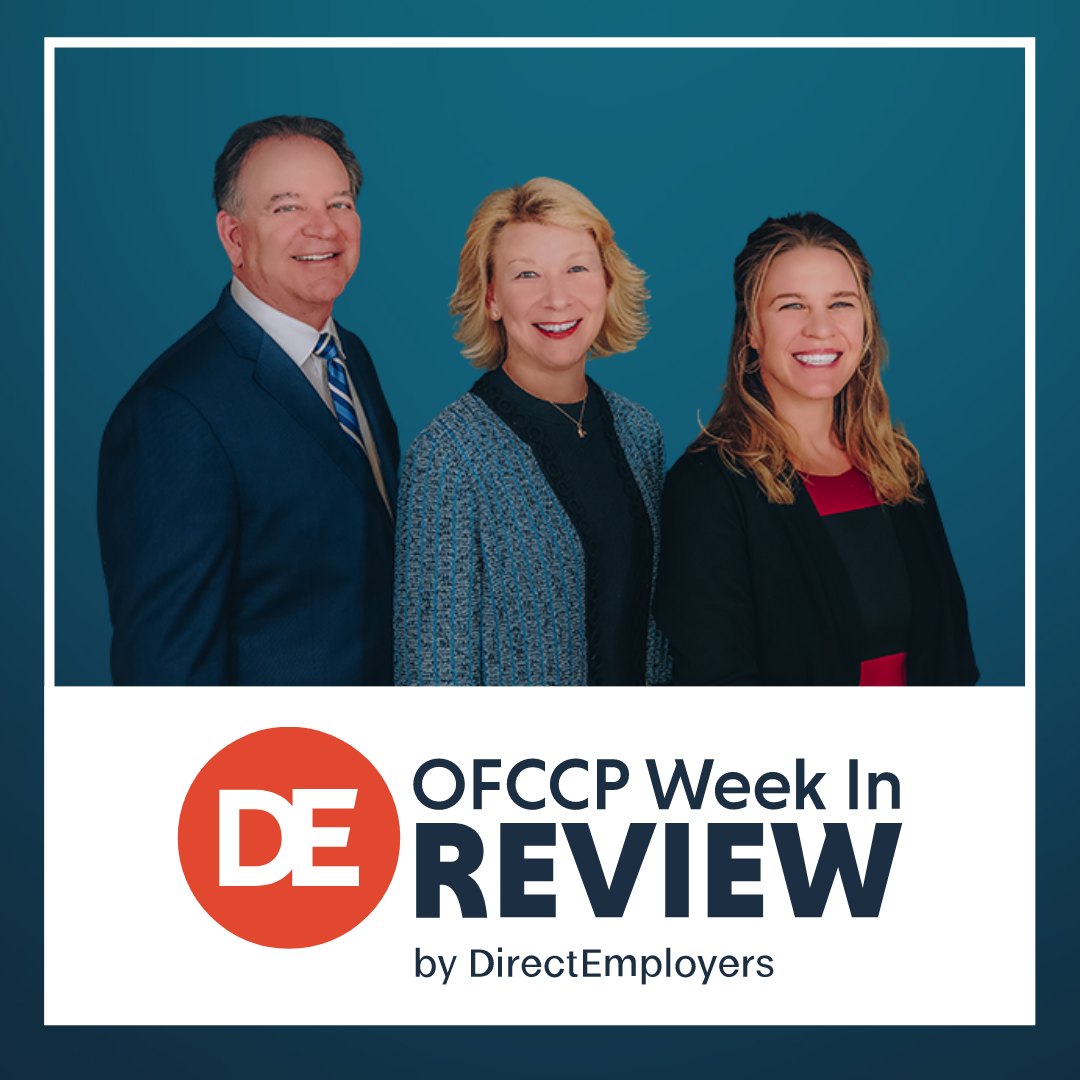
- Part 2: New OFCCP Directive on “Pay Equity Audits” Raises More Questions Than it Answers
- E-Verify Released New Features
- OFCCP’s Proposed NPRM Walks Backwards Promising Less Transparency in Audits and Unknown, But Different (to come), Evidentiary Standards in Discrimination Investigations
- CA Pay Data Reports Show No Surprises and Do not Tell us Much
- New Resources Available for EEO-1 Filers
- Lilly Ledbetter Shared Her Powerful and History-Making Story
- SCOTUS Overturns 5th Circuit, Stays U.S. District Court Injunction of DoD COVID-19 Vaccination Mandate
Monday, March 22, 2022: Part 2: New OFCCP Directive on “Pay Equity Audits” Raises More Questions Than it Answers
Directive Also Acknowledges That “Occupation Segregation,” Not Pay Discrimination Alone, is a “driver of persistent pay disparities.”
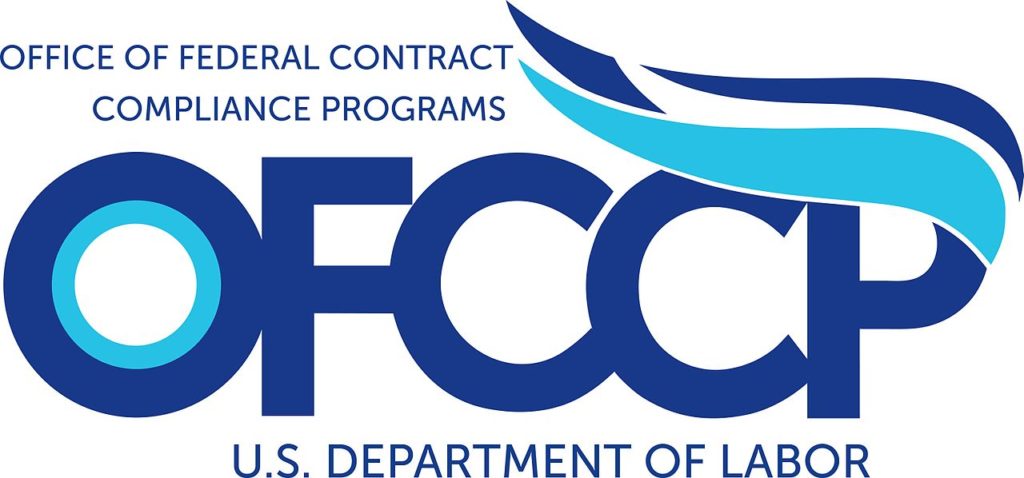
Missed part one of this series focusing on the OFCCPs new pay equity audits?
Catch up on part one of the series which contains the discussion of the first three “OFCCP Confusions.”
Monday, March 21, 2022: E-Verify Released New Features

Users may now close a case from the document upload page in E-Verify by providing one of the following reasons:
- the information entered was not correct;
- the employee voluntarily quit working for the employer; or
- other (full explanation required in text box).
E-Verify also added a requirement to download the Further Action Notice before referring a case. This ensures E-Verify users correctly process Tentative Nonconfirmation cases.
Tuesday, March 22, 2022: OFCCP’s Proposed NPRM Walks Backwards Promising Less Transparency in Audits and Unknown, But Different (to come), Evidentiary Standards in Discrimination Investigations
Contractors Will Not Like OFCCP’s Assault on Their Rights or OFCCP Interpretations of Title VII Law Requirements Changing Like the Weather
But This Will Happen as OFCCP Continues Its New March to be a Highly Politicized Federal Agency Like the NLRB with Enforcement Policies Which Change Depending on Which Party Is in The White House
It is a sad day, but that day is upon us when step-by-step, OFCCP again forfeits its place as a neutral investigator (“Switzerland”) faithfully investigating and prosecuting three statutes the Congress has not changed in 30+ years even while OFCCP now changes its interpretations of these laws with every new Democrat or Republican Administration. It has only been like this for the last three Administrations.
The object of current concern is OFCCP’s announcement it is now going to implement in fact its year-old threat to rescind the November 10, 2020 Trump OFCCP so-called “Predetermination Notice (“PDN”) Rule,” a short-lived breath of transparency and organization of often chaotic OFCCP audits claiming contractors had accomplished “systemic” (statistically based) discrimination.
OFCCP published the following four documents which now draw our interest to the way the agency proposes to (and will) go forward to conduct audits alleging unlawful discriminatory employment practices and conciliate differences with covered federal Government contractors:
- A two-page March 21, 2022 USDOL Press Release on USDOL’s Press Office website: “US DEPARTMENT OF LABOR ANNOUNCES PROPOSED RULE FOR MODIFYING PROCEDURES TO IDENTIFY, REMEDY DISCRIMINATION IN FEDERAL CONTRACTING
Seeks to improve process, better use resources to promote equal employment opportunity;” and
- What appears to be the earlier draft of the same Press Release which OFCCP pushed to subscribers of the agency’s news alerts titled: “OFCCP Announces Proposed Rule for Modifying Procedures to Identify and Remedy Discrimination in Federal Contracting;”
- Well, this looks both like a little pushing and shoving going on between OFCCP and the Secretary of Labor’s Press Office as to who is going to take the bow (“US DEPARTMENT OF LABOR ANNOUNCES…” vs. “OFCCP Announces…” and somebody is likely to get a tongue-lashing for not coordinating at least common content between the two dueling Press Releases. (But truth be told, as a former newspaper editor, I prefer the OFCCP version of the Press Release because it is better written. But both Press Release writers need to work hard to get rid of the gerunds. I mean, what is it with those “ing” gerunds…. Need to work on sharpening those up next time….)
- A two-page March 21, 2022 Blog from OFCCP Director Jenny Yang which repeats the content of the Press Releases, although following the OFCCP version of the mantras and titled: “Protecting Workers, Promoting Diversity and Enforcing the Law.” (Notice: this is the marketing and media-hype document seeking to create in the reader mental images of grand and heroic themes and lofty aspirations written for political consumption…it is almost as though the Director’s Blog should have been the Press Release and the Press Release should have been the Blog); and
- A 42-page Federal Register “Notice of Proposed Rule Making” (“NPRM”) titled “Pre-Enforcement Notice and Conciliation Procedures” which confirms and repeats the content of the Press Releases and the Director’s Blog. So, kudos to OFCCP, the USDOL Press Office and the Office of Management and Budget for getting all four writings to consistently make the same substantive (mantra) statements and even despite dueling Press Releases which sometimes used different words to say the same thing. In the end, though, I was worn out with four writings, and would have been more satisfied with just one Press Release and the NPRM. Less is more when there is nothing newer to write.
OFCCP’s NPRM Boils Down to Two Things of Importance to Federal Contractors…
Tuesday, March 22, 2022: CA Pay Data Reports Show No Surprises and Do not Tell us Much

Background: employers of one hundred or more employees must annually report pay and hours-worked data by establishment, job category, sex, race, and ethnicity to DFEH. (See “CA Pay Data Reporting Portal is Open” for more details).
The DFEH reports also provide information for only a small segment of California’s total workforce: 6.3 million employees from approximately 14,000 California establishments. The U.S. Bureau of Labor Statistics estimates the entire workforce of California to be 17.8 million.
Note: The DFEH report excludes data from public employers in California, independent contractors, employers with fewer than one hundred employees, and California employees working in California but assigned to out-of-state establishments.
DFEH has promised an additional report at a later date on gender non-binary employees once the Department completes additional confidentiality checks.
Tuesday, March 22, 2022: New Resources Available for EEO-1 Filers

- 2021 EEO-1 Component 1 Instruction Booklet
- Frequently Asked Questions
Returning users can experience:
- Self-service functions (i.e., updating contacts and inviting registered users to link their accounts to your company)
- Sign-on ability with last year’s email and password
New users must create an account and link their user account to an existing company account.
How We Got Here
See our previous stories on the EEO-1 Survey Collection process.
- Updated Procedures Announced for Third-Party EEO-1 Survey Filers
- EEO-1 Administrators Take Note: EEOC Will Replace Its EEO-1 Type 6 Report For Small Establishments With Its Type 8 Report
- 2021 EEO-1 Component 1 Data Reporting Portal to Open April 12, 2022, with a May 17, 2022, Last-Day-To-File Date. ALSO: 2019/2020 EEO-1 Filing Portal Closed
Thursday, March 24, 2022: Lilly Ledbetter Shared Her Powerful and History-Making Story

The 2009 bill amended Title VII’s “timely filing” requirement as to compensation claims (only) to eliminate the prior requirement for complainants to file their pay Charges either within 180 days of the alleged unlawful pay decision or within three hundred days in those states which have state anti-discrimination laws the federal EEOC had approved. Ms. Ledbetter had not filed her pay discrimination Charge for over a decade since the admittedly unlawful pay decision at-issue (and probably several other unlawful pay decisions) had occurred and even though she had been aware these decisions paying her less than similarly situated male managers had occurred.
As amended, Title VII now allows each paycheck resulting from a discriminatory decision to “restart the clock” for timely filing purposes. In other words, an employee may in 2022 timely challenge an unlawfully discriminatory pay decision an employer made in 1965 if the 1965 pay decision still limits the employee’s current pay.
In so amending Title VII, the Congress reaffirmed that compensation discrimination is analyzed as to each “pay decision,” and not based on “current pay” (as OFCCP currently routinely does in error). NOTE: The 2009 Lilly Ledbetter Act also rifle-shot amended only four anti-discrimination statutes and not all discrimination law statutes. Those statutes amended included Title VII (but not Executive Order 11246 which still applies its pre-Ledbetter Act timely filing period) and Section 504 of the Rehabilitation Act of 1973 (but not either Section 503 of the Rehabilitation Act nor 38 U.S.C. Section 4212 (aka VEVRAA)—which does not make discrimination against Protected Veterans unlawful – see 38 Section 4212: “(2)In addition to requiring affirmative action (emphasis added) to employ such qualified covered veterans under such contracts and subcontracts and in order to promote the implementation of such requirement).”
In this EEOC Webinar, Ms. Ledbetter shared her story about how she experienced pay discrimination, what she did about it, and how the Congress’ amendment of Title VII has helped countless women seeking relief from unlawful compensation discrimination. EEOC Chair Charlotte A. Burrows and Vice-Chair Jocelyn Samuels joined in to discuss the meaning of Equal Pay Day and the agency’s efforts to stop and remedy pay discrimination.
Watch the 60-minute webinar on YouTube:
Friday, March 25, 2022: SCOTUS Overturns 5th Circuit, Stays U.S. District Court Injunction of DoD COVID-19 Vaccination Mandate
- In a 6-3 decision without written opinion (but nonetheless with lengthy concurring and dissenting opinions), the SCOTUS “righted the ship” by following precedent as to the President’s powers as Commander-in-Chief in the Navy Seals case: In the matter of S. Navy SEALs 1-26, et al. v. Biden, et al. SCOTUS stayed the U.S. District Court for the Northern District of Texas’ injunction preventing the U.S. Department of Defense (“DoD”) from considering the COVID-19 vaccination status of 35 U.S. Naval personnel for purposes of deployment, assignment, and other operational decisions.
- In a written concurrence, Justice Kavanaugh reasserted the position that the President is Commander-in-Chief, and not judges. As such, courts must “indulge the widest latitude” to sustain the President’s “function to command the instruments of the national force.”
- Justices Thomas, Gorsuch, and Alito dissented, and in a written opinion Justice Alito (joined by Justice Gorsuch) relied upon the individuals’ rights under the Religious Freedom Restoration Act and the Free Exercise Clause of the First Amendment to support the belief plaintiffs should not suffer job consequences for not getting vaccinated. Specifically, Justice Alito wrote that because their requests not to be vaccinated were a form of accommodation for their religious beliefs, the personnel should not be denied deployment or assignment opportunities.
- Because this is a decision as to only the injunction the lower courts had entered as to the operational assignments of the active-duty military personnel before the Court, the underlying appeal of the merits of the vaccination mandate remain pending before the Fifth Circuit Court of Appeals (New Orleans). So, the case is not over…we are still in the middle innings.
- The 25 Navy Seals and other Special Warfare Operations personnel who are pursuing the appeal are now in a precarious position, from their points of view. The Navy vaccination mandate they have disobeyed threatened dishonorable discharge to those Navy personnel who did not agree to take a COVID-19 vaccination. The Navy may now force the 35 Navy warfare personnel before the Court to be vaccinated to do their duties as SEALs and as Special Operations Military Warfare Specialists or cause them to violate what they claim are sincerely held religious beliefs which do not allow them to receive the COVID-19 vaccination.
Moreover, if these proud warriors agree to be vaccinated, their challenge to the vaccination mandate may then become moot for lack of “standing” to continue their case due to the lack of a “case or controversy.” Rather, the plaintiff SEALS and other Military Warfare Specialists involved in the appeal may now need to either resign their commissions from the Navy, or to resist vaccination and then face possible court-martial for insubordination, or possible reassignment, including to paperwork shuffling desk duties, or to face possible forfeiture of their commissions to serve in the United States Navy. This path of resistance would nonetheless allow them to continue to preserve and practice their religion of choice and to also be legally “injured” to preserve their claim for relief from the vaccination mandate and to later win reinstatement to their positions within the Navy.
On the other hand, maybe the Navy will sensibly drag its feet to address the vaccinations of these thirty-five loyal warriors while awaiting the day President Biden lifts his vaccination mandates in the absence of a continuing health threat due to the COVID-19 virus (assuming that day is coming). It would not be the first time the Navy will have “lost the paperwork…somewhere in channels.” But then again, there are “Soldier of Fortune” openings awaiting in the army of Ukraine where Navy SEAL experience would be highly valued by the Ukrainians and highly feared by Russian regular troops. As one window closes, another door opens….
THIS COLUMN IS MEANT TO ASSIST IN A GENERAL UNDERSTANDING OF THE CURRENT LAW AND PRACTICE RELATING TO OFCCP. IT IS NOT TO BE REGARDED AS LEGAL ADVICE. COMPANIES OR INDIVIDUALS WITH PARTICULAR QUESTIONS SHOULD SEEK ADVICE OF COUNSEL.
SUBSCRIBE.
Compliance Alerts
Compliance Tips
Week In Review (WIR)
Subscribe to receive alerts, news and updates on all things related to OFCCP compliance as it applies to federal contractors.
OFCCP Compliance Text Alerts
Get OFCCP compliance alerts on your cell phone. Text the word compliance to 55678 and confirm your subscription. Provider message and data rates may apply.

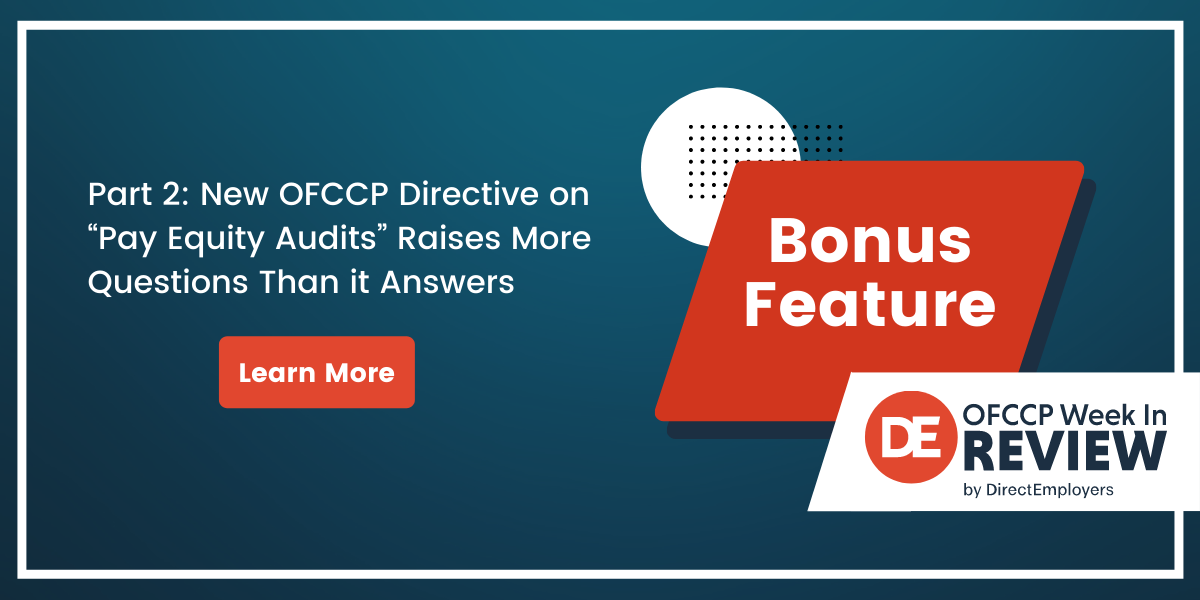
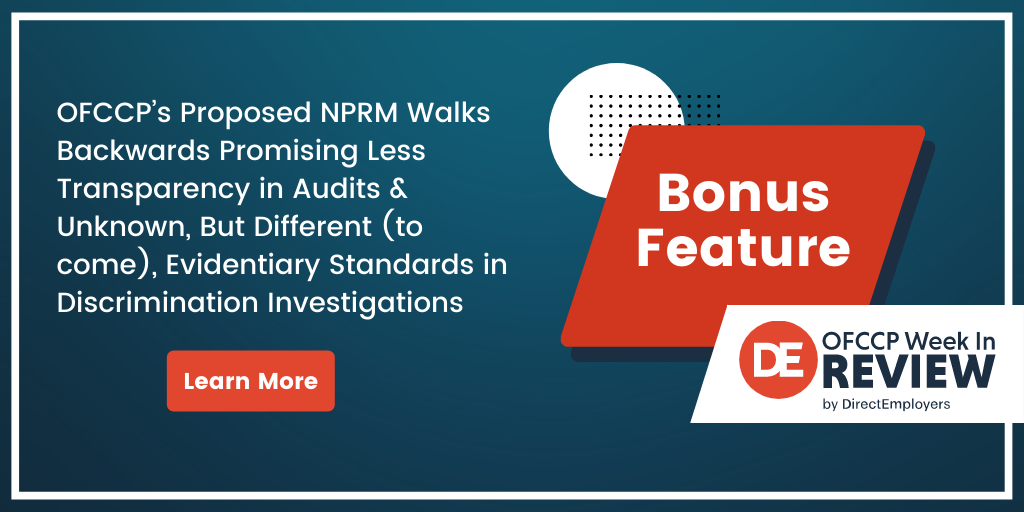
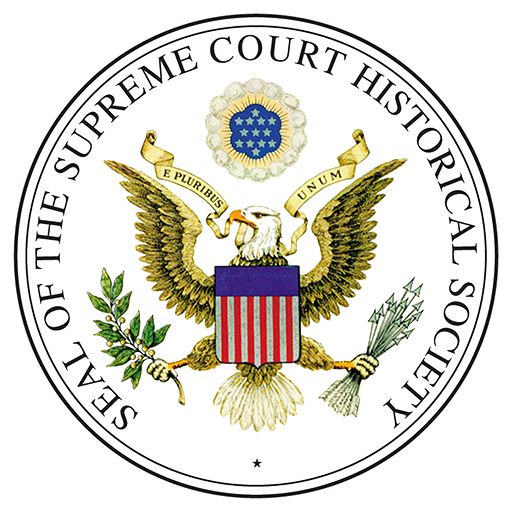
So fair, I’ve been unable to see what the Type 8 EEO-1 report looks like. Is there a link to it?
Hank, we are very sorry for this tardy reply to your March 28, 2022 Week in Review article. We do not think you will find an image of the Type-8 report until you enter the Joint Reporting Committee’s EEO-1 filing portal. Nonetheless, here is a description of a TYPE-8 Report taken from the “Multi-Establishment User’s Guide”: https://eeocdata.org/pdfs/Multi-Establishment%20User%27s%20Guide.pdf.
We hope that helps.